Fascial Counterstrain
Approved by: Brian Tuckey, PT. Founder of Fascial Counterstain
Reviewed & Approved by: Janell Strupp, PT CPI. Owner of Vibrant Health: Integrative Physical Therapy LLC, which provides Fascial Counterstain

 Fascial Counterstrain is a cutting-edge, hands-on approach for the assessment, identification, and correction of one of the most common sources of pain and dysfunction in the human body (COUNTERSTRAIN, 2019).
Fascial Counterstrain is a cutting-edge, hands-on approach for the assessment, identification, and correction of one of the most common sources of pain and dysfunction in the human body (COUNTERSTRAIN, 2019).
The practitioner uses their hands to guide the muscles, dysfunctional joints, or other structures into a position of comfort or ease, thereby shortening offending muscles and releasing spasms. It can help with pain, tightness, spasms, and stiff joints. This treatment is gentle and relatively pain-free. Counterstrain can treat dysfunctions throughout all regions of the body: the musculoskeletal system, nervous system, craniosacral system, and master system (any soft tissue system). It is a safe and gentle treatment.
Fascial Counterstrain works through decompression of pain and movement receptors which exist in the body’s main connective tissue called fascia (Tuckey & Associates, 2019). The technique is so new, that it is actually still being developed by Brian Tuckey, PT, with more tender points being mapped out for different systems in the body, and new treatments becoming available to skilled practitioners each year.
Tuckey, Brian. (2019). COUNTERSTRAIN/Origins of Fascial Counterstrain/Clinics.
https://counterstrain.com/healthcare-professionals/counterstrain-technique/
Tuckey, Brian. (2019). Tuckey & Associates/Fascial Counterstrain Introduction/Dural/Cranial Strain and Counterstrain. Retrieved by: http://tuckeypt.com/cranial-strain-and-counterstrain/
Strupp PT CPI, Janell. (2019, June) Vibrant Health: Integrative Physical Therapy/ Total Health Nutrition Center. Personal Interview.
http://www.totalhealthinc.com/clinical-services/physical-therapy
Physical Therapy First/STRAIN/COUNTERSTRAIN. (2019). Retrieved by:
https://www.physicaltherapyfirst.com/techniques/strain-counterstrain/
Every organ, nerve, artery, muscle, ligament, tendon, vein and lymphatic vessel in the human body can actively spasm and produce pain in a natural, protective response to injury (COUNTERSTRAIN, 2019). And Counterstrain is effective in releasing the spasms no matter where they are in the body.
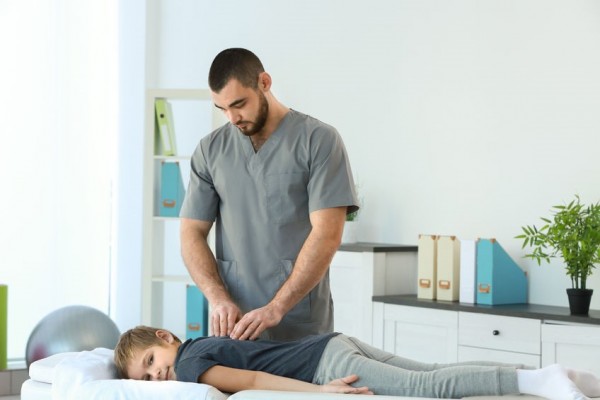 It can help people of all ages, from young children and infants to the elderly, and everyone in between. FCS is a safe, effective treatment for the management of back pain and sciatica during pregnancy. It is gentle enough for fragile conditions, such as osteoporosis or spinal stenosis. It works great for acute injury or traumas, as a means of preventative care, as well as chronic, pain conditions. Acute injuries often respond rapidly, reducing healing time. The technique can also be used in preventative care, by reducing the amount of dysfunction within the human body, function is optimized, and the chance of injury or illness decreases.
It can help people of all ages, from young children and infants to the elderly, and everyone in between. FCS is a safe, effective treatment for the management of back pain and sciatica during pregnancy. It is gentle enough for fragile conditions, such as osteoporosis or spinal stenosis. It works great for acute injury or traumas, as a means of preventative care, as well as chronic, pain conditions. Acute injuries often respond rapidly, reducing healing time. The technique can also be used in preventative care, by reducing the amount of dysfunction within the human body, function is optimized, and the chance of injury or illness decreases.
Surgery Prevention
Janell Strupp, Fascial Counterstrain Practitioner with Vibrant Health Integrative Physical Therapy, says: Counterstrain can be a good alternative preoperatively, and has even helped many individuals to defer recommended surgeries, such as spinal fusion, rotator cuff repair, or total joint arthroplasties. Pre-operatively, Counterstrain sets out to quiet nerve firing (reducing muscle spasm), and normalize restricted blood flow, as well as improve lymphatic drainage. The may potentially prevent the need for a surgery altogether. An analogy might be to fix the kinks in your vessels, similar to unkinking a hose to optimize its function. When improved blood flow and lymphatic function are possible, then the ease of recovery pre or post operatively tends to result. (Janell Strupp PT, Vibrant Health Integrative PT)
Here is a list of some of the health conditions it can help with:
Tuckey, Brian. (2019). COUNTERSTRAIN/Origins of Fascial Counterstrain/Clinics.
https://counterstrain.com/healthcare-professionals/counterstrain-technique/
Tuckey, Brian. (2019). Tuckey & Associates/Fascial Counterstrain Introduction/Dural/Cranial Strain and Counterstrain. Retrieved by: http://tuckeypt.com/cranial-strain-and-counterstrain/
Burkhardt Physical Therapy Center, LLC/What is Fascial Counterstrain?. (2017). Retrieved by:
https://burkhardtpt.com/techniques/#1558470503786-b0f0d435-f4ca
Strupp PT CPI, Janell. (2019, June) Vibrant Health: Integrative Physical Therapy/ Total Health Nutrition Center. Personal Interview.
http://www.totalhealthinc.com/clinical-services/physical-therapy
Some Benefits of Fascial Counterstrain:

Fascial Counterstrain follows the holistic concept of treating the whole body in that everything is connected, and different systems can affect one another. Problems with the lower back region can affect the head, problems in the legs can affect the neck, and so on. Everything is connected through the Fascia.
Counterstrain finds the root cause of a patient’s pain beyond surface symptoms, and fixes it with a multi-system diagnosis. The cranial scan in Fascial Counterstrain is a unique method of locating the exact source of pain. By normalizing blood flow, muscular tension, vascular drainage, and neural input, FCS maximizes the body’s intrinsic healing capacity (COUNTERSTRAIN, 2019). It can be utilized to treat dysfunction in any of the body’s soft tissue systems, not just “myofascia” (fascia surrounding the musculoskeletal system including muscles and ligaments). FCS can help people of all ages, even for those with fragile conditions.
Fascial Counterstrain can treat dysfunction in any of the body’s soft tissue systems or “myofascial pain,” which are responsible for a huge percentage of chronic pain problems. Myofascial pain does not show up on an MRI, X-Ray, or CT scan. Even though pain from fibromyalgia is not the same as myofascial pain, patients with fibromyalgia respond well to counterstrain, because they usually have some degree of myofascial pain.
Since Fascial Counterstrain is about guiding structures into a position of comfort allowing the body to correct itself instead of forcing the correction, it often has lasting results. It has the ability to fix overactive stretch reflexes. Fascial Counterstrain is a very safe, gentle technique with no aggressive manipulation or “thrusts” used. So side effects are typically just soreness, or improvements in pain levels. Treatments are pain free, making it a great option for even the most delicate, chronic pain conditions.
Using fascial Counterstrain for problems in the head region is effective because it uses objective tender points connected with the muscular and fascial tissues of the cranium to diagnose dysfunction. Traditional Craniosacral Therapy which is focused on correcting a perceived cranial “pulse” or “rhythm” inside the craniosacral system, is quite controversial due to poor inter-examiner reliability and a lack of scientific evidence to support the proposed mechanism (Tuckey & Associates, 2019).
Tuckey, Brian. (2019). Tuckey & Associates/Fascial Counterstrain Introduction/Dural/Cranial Strain and Counterstrain. Retrieved by: http://tuckeypt.com/cranial-strain-and-counterstrain/
Tuckey, Brian. (2019). COUNTERSTRAIN/Origins of Fascial Counterstrain/Clinics.
https://counterstrain.com/healthcare-professionals/counterstrain-technique/
Strupp PT CPI, Janell. (2019, June) Vibrant Health: Integrative Physical Therapy/ Total Health Nutrition Center. Personal Interview.
http://www.totalhealthinc.com/clinical-services/physical-therapy
Burkhardt Physical Therapy Center, LLC/What is Fascial Counterstrain?. (2017). Retrieved by:
https://burkhardtpt.com/techniques/#1558470503786-b0f0d435-f4ca
 Every organ, nerve, artery, muscle, ligament, tendon, vein and lymphatic vessel in the human body can actively spasm and produce pain in a natural, protective response to injury (COUNTERSTRAIN, 2019). This injury or trauma could be a quick unexpected stretch, strain, prolonged bad posture, a direct blow, a fall, stress, surgery trauma, food sensitivities, or environmental factors. The body (facial system) produces the reflex spasm most likely as a way of protecting all tissues. Fascia is filled with millions of nerve endings (as well as smooth muscle cells) so that it can contract if injured or traumatized (ARC PHYSICAL THERAPY). When injured this creates an overactive stretch reflex, where muscle cells contract constantly instead of when the central nervous system requires it. Once started this reflex spasm can continue and disperse throughout the body. This causes waste products to build up in the muscles forming hundreds of tender points.
Every organ, nerve, artery, muscle, ligament, tendon, vein and lymphatic vessel in the human body can actively spasm and produce pain in a natural, protective response to injury (COUNTERSTRAIN, 2019). This injury or trauma could be a quick unexpected stretch, strain, prolonged bad posture, a direct blow, a fall, stress, surgery trauma, food sensitivities, or environmental factors. The body (facial system) produces the reflex spasm most likely as a way of protecting all tissues. Fascia is filled with millions of nerve endings (as well as smooth muscle cells) so that it can contract if injured or traumatized (ARC PHYSICAL THERAPY). When injured this creates an overactive stretch reflex, where muscle cells contract constantly instead of when the central nervous system requires it. Once started this reflex spasm can continue and disperse throughout the body. This causes waste products to build up in the muscles forming hundreds of tender points.
With the Fascial Counterstrain Systems approach, practitioners easily are able to identify which systems and areas of the body have been affected, and treat those areas with a gentle, systematic approach (Janell Strupp PT, Vibrant Health Integrative PT). Fascial Counterstrain works to shorten or compress the tissue in spasm and the associated tender point which unloads the injured structure. By manually positioning the body against the strain “counterstrain,” the spasm is stopped, and the nerve ending and smooth muscle in the fascia is reset. The area than becomes relaxed, and the primary source of pain is gone. Think of a rubber band as the muscle when no longer stretched the tension disappears. It is easy to tell that the strain has been eliminated because the tender point will no longer be tender. This treatment restores blood flow and normalizes the neuromuscular reflexes, which activate healing in the immune system.
The practitioner knows when the tissues have been effectively shortened, because they start to feel a “pulsing” at the tender point. The practitioner can find the dysfunctions in the body with a cranial scan, by touching areas in the head. The cranium provides an overview of the whole body, as to where the dysfunction is, what tender points need to be treated, and where based on the individual’s body.
To read more in-depth on how Counterstrain works for the Nervous System, Musculoskeletal System, Lymphatic System, Viscera, and Dural/Cranial, visit Tuckey & Associates.
Fascia is the connective tissue of the body that surrounds all organs, muscles, tendons, ligaments, blood vessels, and the whole nervous system. It not only connects and holds everything together, but recent research has proven that fascia also houses the important “Stretch Reflex,” our body’s first line of defense. Fascia has to be able to move, stretch, and glide with all of our movements. If it can’t stretch or elongate, pain, loss of flexibility, and mobility can be lost, it can even result in organ dysfunction. Fascia can contract in a similar manner to muscles, which can cause pain and restrictions if it continues to reflexively contract when no longer needed. This contracting can seem like common musculoskeletal pain, but will not be improved through massage or exercise.
It is also important to note, the body is always working toward homeostasis (keeping everything functioning smoothly), and Fascial Counterstrain improves the immune system functions long term. Brian Tuckey, creator of Fascial Counterstrain, says "If you can restore blood flow, what can't you do? And we are talking about restoring the deep blood flow at the neuromuscular reflex level, main branches to organs and other important structures long term (not just temporary change to surface capillaries like would be affected with a biomat, hot pack or an ultrasound)” (Tuckey & Associates, 2019). By normalizing blood flow, muscular tension, vascular drainage, and neural input, FCS maximizes the body’s intrinsic healing capacity (COUNTERSTRAIN, 2019). Fascial Counterstrain finds and treats the deep root cause of pain, not just symptoms on the surface.
To read more in-depth on how Counterstrain works via a Neuromuscular Paradigm System, visit Tuckey & Associates.
Tuckey, Brian. (2019). COUNTERSTRAIN/Origins of Fascial Counterstrain/Clinics.
https://counterstrain.com/healthcare-professionals/counterstrain-technique/
ARC PHYSICAL THERAPY/What is Fascial Counterstrain?. Retrieved by:
http://arcphysicaltherapy.com/what-is-fascial-counterstrain/
Tuckey, Brian. (2019). Tuckey & Associates/Fascial Counterstrain Introduction/Dural/Cranial Strain and Counterstrain. Retrieved by: http://tuckeypt.com/cranial-strain-and-counterstrain/
Tuckey, Brian. (2019). COUNTERSTRAIN/Origins of Fascial Counterstrain/Clinics.
https://counterstrain.com/healthcare-professionals/counterstrain-technique/
Burkhardt Physical Therapy Center, LLC/What is Fascial Counterstrain?. (2017). Retrieved by:
https://burkhardtpt.com/techniques/#1558470503786-b0f0d435-f4ca
Strupp PT CPI, Janell. (2019, June) Vibrant Health: Integrative Physical Therapy/ Total Health Nutrition Center. Personal Interview.
http://www.totalhealthinc.com/clinical-services/physical-therapy
The gentleness of Fascial Counterstrain makes it safe and effective for treating fragile patients (i.e., infants with torticollis, elderly patients with osteoporosis, arthritis, stress fractures, pregnancy or pelvic pain patients, post-operative pain, etc.) and the pain associated with excessive joint motion or hyper-mobility (ARC PHYSICAL THERAPY). It is a gentle, non-traumatic technique that usually only causes soreness for the patient at most. The risks are a lot lower than with manual therapies that use manipulation techniques. It moves the body in the direction opposite pain and restrictive directions of motion. Its innate ability to reduce an overactive stretch reflex will ultimately lead to the optimal conditions for the body to correct itself naturally, without force, without the need for drugs, injections, or surgeries. (Janell Strupp PT, Vibrant Health Integrative PT)
Tuckey, Brian. (2019). Tuckey & Associates/Fascial Counterstrain Introduction/Dural/Cranial Strain and Counterstrain. Retrieved by: http://tuckeypt.com/cranial-strain-and-counterstrain/
Burkhardt Physical Therapy Center, LLC/What is Fascial Counterstrain?. (2017). Retrieved by:
https://burkhardtpt.com/techniques/#1558470503786-b0f0d435-f4ca
ARC PHYSICAL THERAPY/What is Fascial Counterstrain?. Retrieved by:
http://arcphysicaltherapy.com/what-is-fascial-counterstrain/
Strupp PT CPI, Janell. (2019, June) Vibrant Health: Integrative Physical Therapy/ Total Health Nutrition Center. Personal Interview.
http://www.totalhealthinc.com/clinical-services/physical-therapy
Before his discovery, he was using high velocity manipulation techniques for joint problems, and found 2/3rds of his patients were improving, but he wasn’t satisfied with that. He had a growing interest in the concept of positional release now called somatic dysfunction.
Jones discovery was made in 1955, when he was helping a patient who was unable to stand upright due to severe back pain across the low lumbar area. Dr. Jones had treated him with High Velocity Manipulation techniques for six weeks with no improvements in symptoms. The patient also previously received over two and half months of unsuccessful treatment with chiropractors. The man complained about his inability to stay in one sleeping position for more than 15 minutes. So Dr. Jones decided to devote a treatment session entirely to helping him find a better sleep position. When Dr. Jones finally found a position of comfort the patient laid there for 20 minutes. After the 20 minutes the patient stood up, and was able to stand fully erect for the first time in six months. The patient ended up making a full recovery. Dr. Lawrence realized his discovery could help treat all types of somatic dysfunction. His technique was developed over the next 40 years.
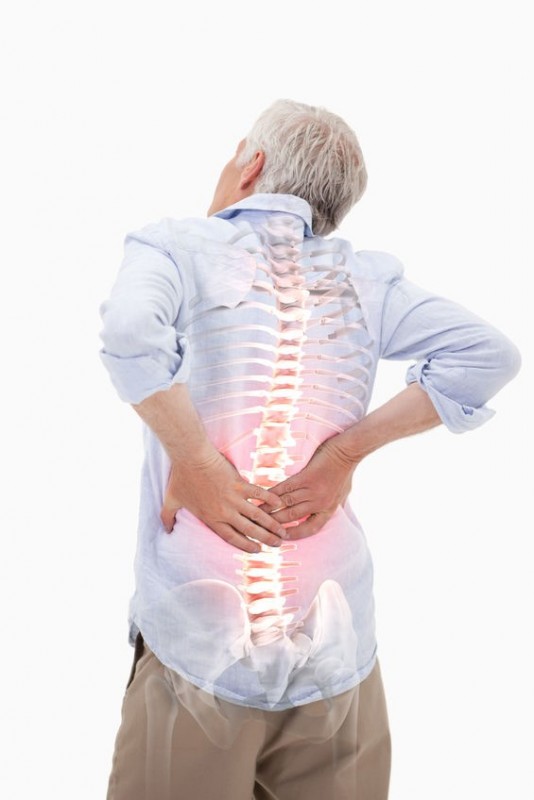 Dr. Jones was teaching a minimal number of Counterstrain classes in 1986, mostly to osteopaths. However, many were moving away from manual therapies toward practicing (science based) modern medicine. Due to this shift, Dr. Jones started training physical therapists Counterstrain, and still today it is more common among physical therapists than osteopaths. It has grown in popularity across the United States with the creation of The Jones Institute and interest from physical therapists. Over the last 15 years, The Jones Institute has contracted with affiliate companies in France, Italy, Australia, Austria, Taiwan, and China, with more countries on the horizon (COUNTERSTRAIN The Jones Institute, 2018). Counterstrain continues to grow and spread across the world.
Dr. Jones was teaching a minimal number of Counterstrain classes in 1986, mostly to osteopaths. However, many were moving away from manual therapies toward practicing (science based) modern medicine. Due to this shift, Dr. Jones started training physical therapists Counterstrain, and still today it is more common among physical therapists than osteopaths. It has grown in popularity across the United States with the creation of The Jones Institute and interest from physical therapists. Over the last 15 years, The Jones Institute has contracted with affiliate companies in France, Italy, Australia, Austria, Taiwan, and China, with more countries on the horizon (COUNTERSTRAIN The Jones Institute, 2018). Counterstrain continues to grow and spread across the world.
Dr. Jones is no longer around, but his treatment continues to grow and improve. Counterstrain has continued to be developed by physical therapist Brain Tuckey PT, OCS, JSCCI. Mr. Tuckey, a physical therapist a diverse experience in manipulative therapies, is one of only 4 physical therapists in the world ever to be certified by Lawrence Jones D.O to teach Strain and Counterstrain Technique (SCS) (COUNTERSTRAIN, 2019). The original technique was called “positional release technique,” and was later updated to be called “Strain and Counterstrain (SCS).” Tuckey changed it to “Fascial Counterstrain” after expanding upon Dr. Jone’s concepts and methods. FCS changes SCS from a regional tender point model to an anatomically, system specific model that markedly expands the specificity, scope and power of the technique (COUNTERSTRAIN, 2019). FCS helps with all regions of the body with over 4,000 tender points, where SCS was focused on the musculoskeletal system with only 200.
The name Fascial Counterstrain has been copyrighted by Tuckey, and he is still developing it with new tender points being found for different systems. He also teaches Advanced Counterstrain courses through the International Continuing Education Company, the Jones Institute, as well as seeing patients at Tuckey and Associate Physical Therapy in Frederick, MD.
COUNTERSTRAIN The Jones Institute/The Power to Heal Lies in the Palm of your Hands/Origins of Counterstrain. (2018). Retrieved by: https://www.jicounterstrain.com/
Tuckey, Brian. (2019). COUNTERSTRAIN/Origins of Fascial Counterstrain/Clinics.
https://counterstrain.com/healthcare-professionals/counterstrain-technique/
Burkhardt Physical Therapy Center, LLC/What is Fascial Counterstrain?. (2017). Retrieved by:
https://burkhardtpt.com/techniques/#1558470503786-b0f0d435-f4ca
Tuckey, Brian. (2019). Tuckey & Associates/Fascial Counterstrain Introduction/Dural/Cranial Strain and Counterstrain. Retrieved by: http://tuckeypt.com/cranial-strain-and-counterstrain/
Strupp PT CPI, Janell. (2019, June) Vibrant Health: Integrative Physical Therapy/ Total Health Nutrition Center. Personal Interview.
http://www.totalhealthinc.com/clinical-services/physical-therapy
A series of fascial experiments performed in the 1990’s by Yahia, 1993 and Straubesand in 1996 verified the ability of human fascia to actively contract and identified the presence of myofibroblasts or smooth muscle cells embedded within the fascia itself (10, 11) (Tuckey & Associates, 2019).
The first ever study was done in 2006 called Stretch Reflex and Hoffman Reflex Responses to Osteopathic Manipulative Treatment in Subjects With Achilles Tendinitis. This was recorded in the Journal of the American Osteopathic Association.
In 2007, there was a report called Physical Therapy Management of Complex Regional Pain Syndrome I in a 14-Year-Old Patient Using Strain Counterstrain: A Case Report published in the Journal of Manual & Manipulative Therapy. It shows the success of using Fascial Counterstrain for a 14-year-old with Complex Regional Pain Syndrome. The boy saw significant improvements with a decrease in tenderness on 10 of the 13 tender points, increased function, gait improved, single limb stance on the involved leg, ankle range of motion, muscle strength, and overall pain improved.
There are also some Cited Research Articles on Tuckey & Associates.
Both Fascial Counterstrain and Myofascial Release work with the fascia, so it can be confusing as to how these treatments are different. But, they are actually complete opposites.
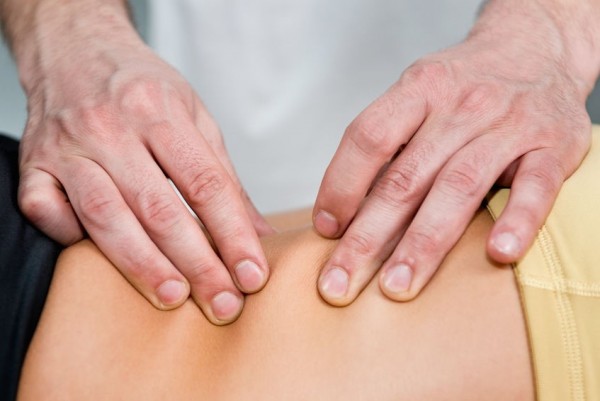 Janell Strupp, Fascial Counterstrain Practitioner with Vibrant Health Integrative Physical Therapy, says: Fascial Counterstrain (FCS) is an innovative system of soft tissue manipulation developed by board certified orthopedic specialist, Brian Tuckey PT, OCS, JSCCI. FCS is considered an indirect technique, placing the root source of pain in a direction of ease and comfort. In comparison, Myofascial Release, a form of direct manual therapy, is a type of massage and “stretching” which is done upon the principle of pushing past the border of pain to force contracted tissues to submission. The type of relief provided by this is a more unnatural method of releasing soft tissue restrictions that often isn’t recognized by the immune system. At the subconscious level, the “stretch reflex” may reflexively begin to contract the same area, within a short period of time. It will restore the contracted condition that it recalls, acting on protective responses to provide the safest possible environment that it conceives. In actuality, the result can be a speedy return of the unneeded protective tissue spasm. (Janell Strupp PT, Vibrant Health Integrative PT)
Janell Strupp, Fascial Counterstrain Practitioner with Vibrant Health Integrative Physical Therapy, says: Fascial Counterstrain (FCS) is an innovative system of soft tissue manipulation developed by board certified orthopedic specialist, Brian Tuckey PT, OCS, JSCCI. FCS is considered an indirect technique, placing the root source of pain in a direction of ease and comfort. In comparison, Myofascial Release, a form of direct manual therapy, is a type of massage and “stretching” which is done upon the principle of pushing past the border of pain to force contracted tissues to submission. The type of relief provided by this is a more unnatural method of releasing soft tissue restrictions that often isn’t recognized by the immune system. At the subconscious level, the “stretch reflex” may reflexively begin to contract the same area, within a short period of time. It will restore the contracted condition that it recalls, acting on protective responses to provide the safest possible environment that it conceives. In actuality, the result can be a speedy return of the unneeded protective tissue spasm. (Janell Strupp PT, Vibrant Health Integrative PT)
So Fascial Counterstrain, being an indirect technique, does the exact opposite of stretching and manipulation. The structure at fault is shortened even more, causing a specific anatomical structure to be on slack. For example, imagine a muscle as a rubber band that is no longer stretched. When the stretch reflex is taken away, normal function of the nerve and vessels results, stimulating a healing response, consistently recognizable by the immune system.
Brian Tuckey, creator of Fascial Counterstrain, explains why Fascial Counterstrain is more effective: “The FCS is turning off the root source of the pain, the neuromuscular reflex that is driven by stretch. Stretch makes it more reactive, which is not a good thing- a temporary "stretch" release doesn't last long, the way I understand it. But if you can improve blood flow and quiet the nerves, dialing down the stretch reflex neuromuscularly, then the effects are profound, and they stimulate the immune system to achieve homeostasis...natural healing occurs, and the results are sustainable. If pain does return, it just means there are additional points that need to be released that can be found with the cranial scan.” (Tuckey & Associates, 2019)
Tuckey, Brian. (2019). Tuckey & Associates/Fascial Counterstrain Introduction/Dural/Cranial Strain and Counterstrain. Retrieved by: http://tuckeypt.com/cranial-strain-and-counterstrain/
Strupp PT CPI, Janell. (2019, June) Vibrant Health: Integrative Physical Therapy/ Total Health Nutrition Center. Personal Interview.
http://www.totalhealthinc.com/clinical-services/physical-therapy
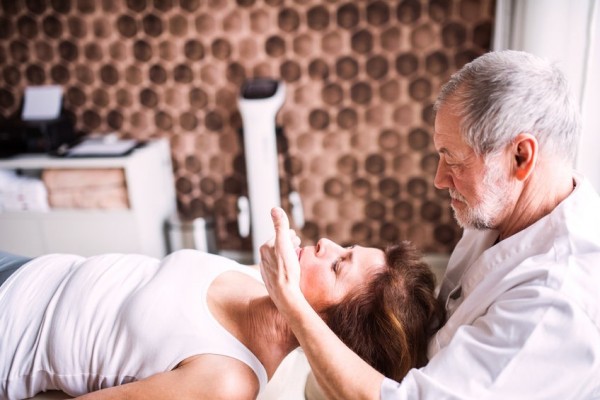 It a preferred for a practitioner to be in the health care profession so they have a solid understanding of the human anatomy and bodywork experience. Practitioners learn over 900 different techniques which are divided into 6 separate anatomical systems. Courses must be taken in a specific order, and certificates of completion are required for continuing onto new courses. When choosing a practitioner, find out if they have completed all of the current coursework. Brian Tuckey, creator of Fascial Counterstrain, is still developing new trigger points on the body, so there will be more courses released in the future.
It a preferred for a practitioner to be in the health care profession so they have a solid understanding of the human anatomy and bodywork experience. Practitioners learn over 900 different techniques which are divided into 6 separate anatomical systems. Courses must be taken in a specific order, and certificates of completion are required for continuing onto new courses. When choosing a practitioner, find out if they have completed all of the current coursework. Brian Tuckey, creator of Fascial Counterstrain, is still developing new trigger points on the body, so there will be more courses released in the future.
There are two different certifications available for advanced practitioners completing the Fascial Counterstrain training the Orthopedic Certification and Advanced Certification. In order to obtain a certification, it is required for the licensed health practitioner to have completed all courses: Upper Quarter, Lower Quarter, Cranials, along with having two years of clinical application through The Jones Institute.
COUNTERSTRAIN The Jones Institute/The Power to Heal Lies in the Palm of your Hands/Origins of Counterstrain. (2018). Retrieved by: https://www.jicounterstrain.com/
Tuckey, Brian. (2019). COUNTERSTRAIN/Origins of Fascial Counterstrain/Clinics.
https://counterstrain.com/healthcare-professionals/counterstrain-technique/
Strupp PT CPI, Janell. (2019, June) Vibrant Health: Integrative Physical Therapy/ Total Health Nutrition Center. Personal Interview.
http://www.totalhealthinc.com/clinical-services/physical-therapy
Although Fascial Counterstrain has been growing, it is still not widely known. Although the most recent research on fascia supports the principles of Fascial Counterstrain, the technique is still being further developed and the research is relatively new, therefore it is still not a well-known treatment among doctors or other health care professionals, often including conventional-minded physical therapists. A Counterstrain provider is most often a licensed Physical Therapist.
It is important to search for and choose a specialized practitioner who has kept current with continuing education in Counterstrain, as new tender points are still being discovered, and results are largely based on the education the individual provider has. You might also find an Osteopath or other medical profession who provides Fascial Counterstrain. However, the best way to find a Fascial Counterstrain practitioner near you is to view one of the directories listed below. The specially trained practitioners listed have been trained and approved by the Jones Institute.
View the Counterstrain Directory or Jones Institute
Tuckey, Brian. (2019). COUNTERSTRAIN/Origins of Fascial Counterstrain/Clinics.
https://counterstrain.com/healthcare-professionals/counterstrain-technique/
COUNTERSTRAIN The Jones Institute/The Power to Heal Lies in the Palm of your Hands/Origins of Counterstrain. (2018). Retrieved by: https://www.jicounterstrain.com/
Tuckey, Brian. (2019). Tuckey & Associates/Fascial Counterstrain Introduction/Dural/Cranial Strain and Counterstrain. Retrieved by: http://tuckeypt.com/cranial-strain-and-counterstrain/
Strupp PT CPI, Janell. (2019, June) Vibrant Health: Integrative Physical Therapy/ Total Health Nutrition Center. Personal Interview.
http://www.totalhealthinc.com/clinical-services/physical-therapy
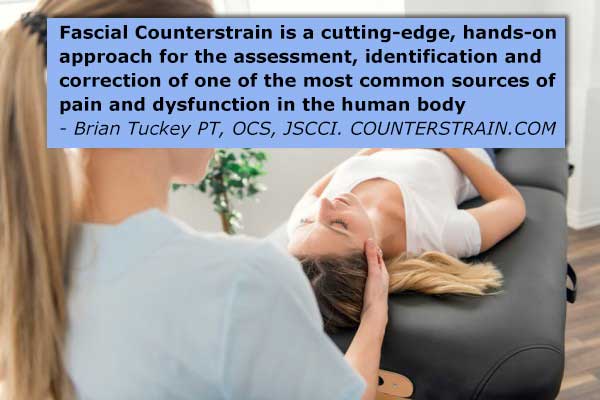 A visit is typically about an hour with the initial visit being around an hour and a half. It is recommended to wear comfortable clothing and avoid thick, rigid clothes like jeans. After filling out some paperwork of health history and explaining areas of discomfort in the body, the practitioner will typically start with a cranial scan (which can take just a couple minutes). The practitioner may also perform tests such as strength testing, range of motion, posture assessment, mobility testing, neurological tests, palpation for neuromuscular tender points, or spinal motion testing. At each follow up appointment, they will typically just do a cranial scan.
A visit is typically about an hour with the initial visit being around an hour and a half. It is recommended to wear comfortable clothing and avoid thick, rigid clothes like jeans. After filling out some paperwork of health history and explaining areas of discomfort in the body, the practitioner will typically start with a cranial scan (which can take just a couple minutes). The practitioner may also perform tests such as strength testing, range of motion, posture assessment, mobility testing, neurological tests, palpation for neuromuscular tender points, or spinal motion testing. At each follow up appointment, they will typically just do a cranial scan.
A cranial scan is a hands-on method of feeling for motional restrictions and tender points in the head to figure out where the dysfunction is, what tender points to treat and what system of the body needs to be addressed. The cranium (head) provides an overview of the whole body, and allows the practitioner to know exactly where to start based on the individual’s body. For example, a motion restriction in the back of the head may point to a nerve in the leg that needs to be treated.
After completing a cranial scan, the practitioner will have the patient lay face down or up on a massage type table (still clothed) or just sitting. There may be some positions changes throughout based on the results of the cranial scan. Then they will begin by applying light pressure with their fingers to see which areas are stiff or tender to the touch, this is around the specific location that needs to be treated first. The clinician is specially trained to identify stiff local tender points. They then apply gentle, yet highly specific, indirect manual techniques, while the patient is positioned to provide the greatest comfort and ease. The area should then be less tender, more flexible, and pain free. The same methods are repeated throughout different areas of the body. The practitioner may return to the head at some point, in order to do another cranial scan, to see what area to focus on next.
It does depend on the individual. It can depend on how much pain they are dealing with in different areas of the body, the number and severity of fascial tender points present, how their body responds to the treatments, how long they take to get beneath the pain threshold. Often clinical improvements are present and observable from the first session onward. Patients with chronic pain can expect to see a specially trained physical therapist for an average of 8 (1 hour) sessions, although some people experience lasting results more quickly (3-4 sessions), for others, it may take longer to complete the healing process. The length of treatment can also depend on the level of experience of the practitioner. If a practitioner hasn’t completed all their coursework, they may be unable to help with the points in the body that need to be addressed.
If the patient still has pain and the cranial scan comes back with no systems to work on, the person has pain in areas yet to be taught. Brian Tuckey, creator of Fascial Counterstrain, is still developing new points for different systems. It is recommended to continue working with your Physical Therapist, and following your individualized plan of care, until your Fascial Cranial Scan has been cleared by your therapist, or until your pain symptoms are no longer posing limitations to your overall daily function (Janell Strupp PT, Vibrant Health Integrative PT).
Some people will come to Tuckey & Associates 3-4 times a year without any specific pain just to prevent illnesses or diseases from occurring. Tuckey says, “I can take nearly anyone off the street and find dysfunction that could benefit from being treated preventatively, and the person would feel/be functioning even more optimal afterward, even for high level athletes.” (Tuckey & Associates, 2019). It can help people who are very active, or very sedentary. This is because the body is always trying to reach a state of homeostasis. At Tuckey & Associates most patients do see relief within 1-6 sessions and are discharged to home programs within 10 sessions.
Strupp PT CPI, Janell. (2019, June) Vibrant Health: Integrative Physical Therapy/ Total Health Nutrition Center. Personal Interview.
http://www.totalhealthinc.com/clinical-services/physical-therapy
NORTHWEST STRENGTH LAB/What is Fascial Counterstrain?. Retrieved by:
http://www.nwstrengthlab.com/counterstrain
Tuckey, Brian. (2019). Tuckey & Associates/Fascial Counterstrain Introduction/Dural/Cranial Strain and Counterstrain. Retrieved by: http://tuckeypt.com/cranial-strain-and-counterstrain/
Tuckey, Brian. (2019). COUNTERSTRAIN/Origins of Fascial Counterstrain/Clinics.
https://counterstrain.com/healthcare-professionals/counterstrain-technique/
Coach Izzy’s Health and Strength for a Fit and Pain Free Life/Your First Visit – What is it like?. (2018) Retrieved by: https://healing-and-strength.com/your-first-visit/
Physical Therapy First/STRAIN/COUNTERSTRAIN. (2019). Retrieved by:
https://www.physicaltherapyfirst.com/techniques/strain-counterstrain/
NORTHWEST STRENGTH LAB/What is Fascial Counterstrain?. Retrieved by:
http://www.nwstrengthlab.com/counterstrain
Strupp PT CPI, Janell. (2019, June) Vibrant Health: Integrative Physical Therapy/ Total Health Nutrition Center. Personal Interview.
http://www.totalhealthinc.com/clinical-services/physical-therapy
Tuckey, Brian. (2019). COUNTERSTRAIN/Origins of Fascial Counterstrain/Clinics.
https://counterstrain.com/healthcare-professionals/counterstrain-technique/
Tuckey, Brian. (2019). Tuckey & Associates/Fascial Counterstrain Introduction/Dural/Cranial Strain and Counterstrain. Retrieved by: http://tuckeypt.com/cranial-strain-and-counterstrain/
Burkhardt Physical Therapy Center, LLC/What is Fascial Counterstrain?. (2017). Retrieved by:
https://burkhardtpt.com/techniques/#1558470503786-b0f0d435-f4ca
COUNTERSTRAIN The Jones Institute/The Power to Heal Lies in the Palm of your Hands/Origins of Counterstrain. (2018). Retrieved by: https://www.jicounterstrain.com/
ARC PHYSICAL THERAPY/What is Fascial Counterstrain?. Retrieved by:
http://arcphysicaltherapy.com/what-is-fascial-counterstrain/
Coach Izzy’s Health and Strength for a Fit and Pain Free Life/Your First Visit – What is it like?. (2018) Retrieved by: https://healing-and-strength.com/your-first-visit/